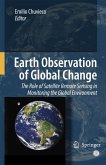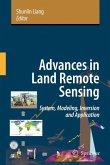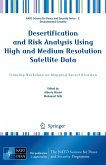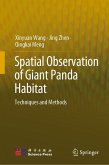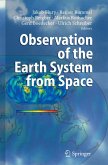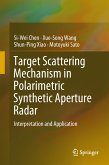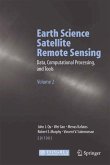Huadong Guo, Wenxue Fu, Guang Liu
Scientific Satellite and Moon-Based Earth Observation for Global Change (eBook, PDF)
96,95 €
96,95 €
inkl. MwSt.
Sofort per Download lieferbar

48 °P sammeln
96,95 €
Als Download kaufen

96,95 €
inkl. MwSt.
Sofort per Download lieferbar

48 °P sammeln
Jetzt verschenken
Alle Infos zum eBook verschenken
96,95 €
inkl. MwSt.
Sofort per Download lieferbar
Alle Infos zum eBook verschenken

48 °P sammeln
Huadong Guo, Wenxue Fu, Guang Liu
Scientific Satellite and Moon-Based Earth Observation for Global Change (eBook, PDF)
- Format: PDF
- Merkliste
- Auf die Merkliste
- Bewerten Bewerten
- Teilen
- Produkt teilen
- Produkterinnerung
- Produkterinnerung

Bitte loggen Sie sich zunächst in Ihr Kundenkonto ein oder registrieren Sie sich bei
bücher.de, um das eBook-Abo tolino select nutzen zu können.
Hier können Sie sich einloggen
Hier können Sie sich einloggen
Sie sind bereits eingeloggt. Klicken Sie auf 2. tolino select Abo, um fortzufahren.

Bitte loggen Sie sich zunächst in Ihr Kundenkonto ein oder registrieren Sie sich bei bücher.de, um das eBook-Abo tolino select nutzen zu können.
- Geräte: PC
- ohne Kopierschutz
- eBook Hilfe
- Größe: 18.45MB
Andere Kunden interessierten sich auch für
![Earth Observation of Global Change (eBook, PDF) Earth Observation of Global Change (eBook, PDF)]() Earth Observation of Global Change (eBook, PDF)72,95 €
Earth Observation of Global Change (eBook, PDF)72,95 €![Advances in Land Remote Sensing (eBook, PDF) Advances in Land Remote Sensing (eBook, PDF)]() Advances in Land Remote Sensing (eBook, PDF)216,95 €
Advances in Land Remote Sensing (eBook, PDF)216,95 €![Desertification and Risk Analysis Using High and Medium Resolution Satellite Data (eBook, PDF) Desertification and Risk Analysis Using High and Medium Resolution Satellite Data (eBook, PDF)]() Desertification and Risk Analysis Using High and Medium Resolution Satellite Data (eBook, PDF)160,95 €
Desertification and Risk Analysis Using High and Medium Resolution Satellite Data (eBook, PDF)160,95 €![Spatial Observation of Giant Panda Habitat (eBook, PDF) Spatial Observation of Giant Panda Habitat (eBook, PDF)]() Xinyuan WangSpatial Observation of Giant Panda Habitat (eBook, PDF)160,95 €
Xinyuan WangSpatial Observation of Giant Panda Habitat (eBook, PDF)160,95 €![Observation of the Earth System from Space (eBook, PDF) Observation of the Earth System from Space (eBook, PDF)]() Observation of the Earth System from Space (eBook, PDF)160,95 €
Observation of the Earth System from Space (eBook, PDF)160,95 €![Target Scattering Mechanism in Polarimetric Synthetic Aperture Radar (eBook, PDF) Target Scattering Mechanism in Polarimetric Synthetic Aperture Radar (eBook, PDF)]() Si-Wei ChenTarget Scattering Mechanism in Polarimetric Synthetic Aperture Radar (eBook, PDF)72,95 €
Si-Wei ChenTarget Scattering Mechanism in Polarimetric Synthetic Aperture Radar (eBook, PDF)72,95 €![Earth Science Satellite Remote Sensing (eBook, PDF) Earth Science Satellite Remote Sensing (eBook, PDF)]() Earth Science Satellite Remote Sensing (eBook, PDF)160,95 €
Earth Science Satellite Remote Sensing (eBook, PDF)160,95 €-
-
-
Produktdetails
- Verlag: Springer Nature Singapore
- Seitenzahl: 618
- Erscheinungstermin: 27. Juni 2019
- Englisch
- ISBN-13: 9789811380310
- Artikelnr.: 57059348
Dieser Download kann aus rechtlichen Gründen nur mit Rechnungsadresse in A, B, BG, CY, CZ, D, DK, EW, E, FIN, F, GR, HR, H, IRL, I, LT, L, LR, M, NL, PL, P, R, S, SLO, SK ausgeliefert werden.
- Herstellerkennzeichnung Die Herstellerinformationen sind derzeit nicht verfügbar.
Huadong GUO is a Professor of the Chinese Academy of Sciences (CAS) Institute of Remote Sensing and Digital Earth, an Academician of CAS, a Foreign Member of the Russian Academy of Sciences, a Foreign Member of the Finnish Society of Sciences and Letters, and a Fellow of the World Academy of Sciences. He presently serves as President of the International Society for Digital Earth, Member of United Nations 10-Member Group to support the Technology Facilitation Mechanism, Chairman of the International Committee on Remote Sensing of Environment, Director of the International Centre on Space Technologies for Natural and Cultural Heritage under the Auspices of UNESCO, and Editor-in-Chief of International Journal of Digital Earth and Journal of Big Earth Data.
He specializes in remote sensing information mechanisms, radar for Earth observation, and digital Earth science. He has been PI for over thirty major national projects or programs in China, and PI for seven international radar remote sensing projects. He established a radar scattering geometric model for non-vegetated sand dunes, theoretically proving SAR's penetration abilities, and found a segment of the Great Wall underneath dry sand. He developed radar polarimetric theory for vegetation and discovered the de-polarization phenomenon of volcanic lava and multi-polarization response phenomenon of plants. In recent years, he initiated the concept of Moon-based Earth observation. He has published more than 600 papers and sixteen books, and is the principal awardee of sixteen domestic and international prizes.
Wenxue FU received the Ph.D. degree in SAR remote sensing from Nanjing University, Nanjing, China. He is currently an Associate Professor with the Institute of Remote Sensing and Digital Earth, Chinese Academy of Sciences, Beijing, China. His research interests include radar interferometry for ground deformation retrieval and polarimetric SAR interferometry for forest parameter inversion. He has published more than 20 journal papers.
Guang LIU is a professor of the Institute of Remote Sensing and Digital Earth, Chinese Academy of Sciences. His interesting is the leading edge research of lunar and deep space Earth Observation and SAR Earth Observation. He is a member of the Youth Innovation Promotion Association of the CAS, the International Association of Electronic and Electrical Engineers, and the International Digital Earth Society. He has published over 30 lead-authored and 35 co-authored peer-reviewed journal articles. He is Principal Investigator of Key Program of National Natural Science Foundation of China, and Leading Investigator of ESA-MOST dragon project.
He specializes in remote sensing information mechanisms, radar for Earth observation, and digital Earth science. He has been PI for over thirty major national projects or programs in China, and PI for seven international radar remote sensing projects. He established a radar scattering geometric model for non-vegetated sand dunes, theoretically proving SAR's penetration abilities, and found a segment of the Great Wall underneath dry sand. He developed radar polarimetric theory for vegetation and discovered the de-polarization phenomenon of volcanic lava and multi-polarization response phenomenon of plants. In recent years, he initiated the concept of Moon-based Earth observation. He has published more than 600 papers and sixteen books, and is the principal awardee of sixteen domestic and international prizes.
Wenxue FU received the Ph.D. degree in SAR remote sensing from Nanjing University, Nanjing, China. He is currently an Associate Professor with the Institute of Remote Sensing and Digital Earth, Chinese Academy of Sciences, Beijing, China. His research interests include radar interferometry for ground deformation retrieval and polarimetric SAR interferometry for forest parameter inversion. He has published more than 20 journal papers.
Guang LIU is a professor of the Institute of Remote Sensing and Digital Earth, Chinese Academy of Sciences. His interesting is the leading edge research of lunar and deep space Earth Observation and SAR Earth Observation. He is a member of the Youth Innovation Promotion Association of the CAS, the International Association of Electronic and Electrical Engineers, and the International Digital Earth Society. He has published over 30 lead-authored and 35 co-authored peer-reviewed journal articles. He is Principal Investigator of Key Program of National Natural Science Foundation of China, and Leading Investigator of ESA-MOST dragon project.
Introduction.- Part 1 Earth Observation Satellites.- Development of Earth observation Satellites. -U.S. Earth Observation Satellites.- European Earth Observation Satellites.- Other Earth Observation Satellites.-Chinese Earth Observation Satellites.- Plans of Global Integrated Earth Observation.- Part 2 Scientific Satellite Series for Global Change.- Earth Observation and Scientific Satellites for Global Change.- Atmospheric Carbon Satellite.- Aerosol Satellite.- Night Light Satellite.- Forest Biomass Satellite.- Glacier Satellite.- Ocean Salinity Satellite.- Part 3 New Directions of Global Change Observation from Space.- Network of Multi-satellites for Global Change Observation.- Lunar-based Global Change Observation System.- Global Change Comparison between Planets and Earth.
Introduction.- Part 1 Earth Observation Satellites.- Development of Earth observation Satellites. -U.S. Earth Observation Satellites.- European Earth Observation Satellites.- Other Earth Observation Satellites.-Chinese Earth Observation Satellites.- Plans of Global Integrated Earth Observation.- Part 2 Scientific Satellite Series for Global Change.- Earth Observation and Scientific Satellites for Global Change.- Atmospheric Carbon Satellite.- Aerosol Satellite.- Night Light Satellite.- Forest Biomass Satellite.- Glacier Satellite.- Ocean Salinity Satellite.- Part 3 New Directions of Global Change Observation from Space.- Network of Multi-satellites for Global Change Observation.- Lunar-based Global Change Observation System.- Global Change Comparison between Planets and Earth.

